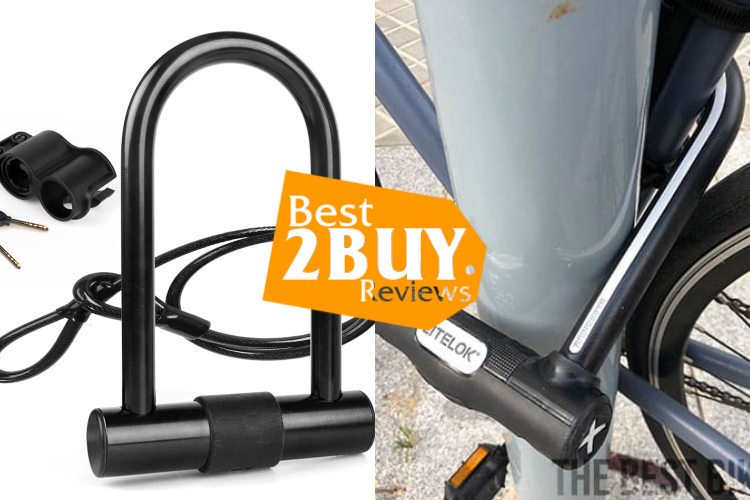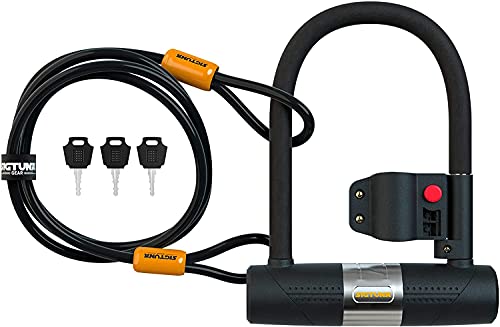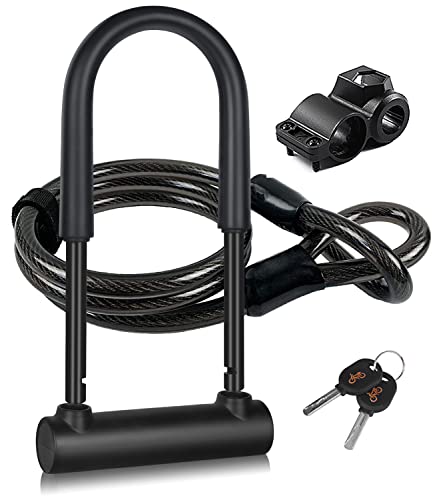The Ultimate Guide to Bike U-Locks: Choosing, Using, and Caring for Your Security

- 1. The Ultimate Guide to Bike U-Locks: Choosing, Using, and Caring for Your Security
- 1.1. Understanding U-Locks
- 1.1.1. Design and Construction:
- 1.1.2. Security Levels:
- 1.2. Choosing the Right U-Lock
- 1.2.1. Security Rating
- 1.2.2. Material and Construction
- 1.2.3. Size and Thickness
- 1.2.4. Locking Mechanism
- 1.2.5. Ease of Use
- 1.2.6. Weight
- 1.2.7. Mounting Options
- 1.2.8. Weather Resistance
- 1.2.9. Brand Reputation
- 1.3. Proper Usage of U-Locks
- 1.3.1. Locking Technique
- 1.3.2. Location Matters
- 1.3.3. Securing Components
- 1.4. Caring for Your U-Lock
- 1.4.1. Regular Inspections
- 1.4.2. Proper Storage
- 1.4.3. Avoiding Common Mistakes
- 1.5. Conclusion
- 1.1. Understanding U-Locks
Cycling stands out as an environmentally conscious and effective means of commuting; however, safeguarding your cherished bicycle holds paramount importance in the contemporary urban setting. Among the widely embraced and efficient methods of bike security, the U-lock takes center stage. This extensive manual will navigate through the realm of U-lock options, shedding light on their characteristics, advantages, and providing insights on selecting, employing, and maintaining these locks.
Understanding U-Locks
Design and Construction:
- U-locks, also known as D-locks, derive their name from their U or D shape. They consist of a hardened steel shackle attached to a lock mechanism.
- The materials used in their construction, particularly high-quality hardened steel, make U-locks resistant to various forms of attacks, including cutting and leverage.
Security Levels:
U-locks are often rated by security levels, ranging from basic to high security. Look for locks that meet industry standards and have undergone testing for durability and resistance against tampering.
Choosing the Right U-Lock
Selecting a U-lock for your bike is a crucial choice in safeguarding it against theft. Consider the following factors when making this important decision:
Security Rating
When evaluating U-locks, prioritize those that have undergone testing and received ratings from independent organizations such as Sold Secure or ART. These ratings offer valuable insights into a lock's ability to withstand various theft techniques, helping you make an informed decision based on its security performance.
Material and Construction
Opt for a U-lock crafted from hardened steel. This material provides superior resistance against cutting and leverage attacks, common tactics employed by bike thieves. Additionally, choose a lock with a thick shackle, as it adds an extra layer of security to thwart attempts at compromise.
Size and Thickness
Strike a balance between thickness and weight when selecting a U-lock. Thicker shackles generally offer more security but can be heavier. Ensure the lock is of sufficient size to secure both the frame and wheel to a fixed object, preventing easy removal by potential thieves.
Locking Mechanism
U-locks typically feature either key or combination mechanisms. While personal preference plays a role in this choice, it's worth noting that key locks are generally considered more secure. Some locks also come equipped with disc-style cylinders, enhancing resistance to picking.
Ease of Use
Consider the practicality of locking and unlocking the U-lock. Opt for a design that is user-friendly and easy to operate. An easily manageable lock is more likely to be consistently utilized, contributing to the overall security of your bike.
Weight
Strike a balance between security and convenience by choosing a lock that offers ample protection without being excessively heavy. Since you'll be carrying the lock while riding, finding the right compromise between weight and security is essential for a seamless biking experience.
Mounting Options
Check if the U-lock comes with a mounting bracket or if it is easily portable. Some locks can be conveniently mounted on the bike frame, making them more accessible and reducing the hassle of carrying a lock separately.
Weather Resistance
Ensure your chosen U-lock is equipped with weather-resistant features to prevent rust and corrosion. This is particularly important if your bike will be exposed to the elements for extended periods, safeguarding the lock's durability and effectiveness over time.
Brand Reputation
Consider locks from reputable brands with a history of producing high-quality and durable bike security products. Read reviews and user feedback to assess the reliability of the lock and make an informed decision based on the experiences of others.
Proper Usage of U-Locks
Locking Technique
- Comprehensive Security: When using a U-lock, ensure both the frame and wheel are securely fastened to a fixed object. Leaving any gaps could provide an opportunity for thieves to exploit weaknesses in your locking system.
- Strategic Placement: Position the U-lock in a way that complicates the use of leverage tools. By carefully selecting where and how you attach the lock, you add an extra layer of defense against theft attempts.
Location Matters
Opt for well-lit and populated locations to lock your bike. High-traffic areas not only deter potential thieves but also increase the likelihood of someone noticing suspicious activity. Choose places where there is a constant flow of people, enhancing the overall security of your bike.
Securing Components
In high-theft areas, it's advisable to use a secondary cable or chain to secure removable components, such as the saddle or front wheel. Thieves often target these easily detachable parts, and an additional layer of security can significantly reduce the risk of theft.
Caring for Your U-Lock
Regular Inspections
Regularly inspecting your U-lock is the first step in ensuring its reliability. Check for signs of wear, rust, or damage, as these issues can compromise the lock's strength. If you notice any such problems during your inspection, it is imperative to replace the U-lock promptly. A compromised lock is an open invitation to thieves, so stay vigilant.
Proper Storage
Proper storage is key to preventing rust and maintaining the overall functionality of your U-lock. Store the lock in a dry place, away from the elements. Exposure to moisture can lead to rust, which not only weakens the lock but also makes it more challenging to operate. Additionally, consider lubricating the locking mechanism periodically to guarantee smooth and effortless usage.
Avoiding Common Mistakes
- Choose Secure Locking Points: One common mistake is locking your bike to weak or movable objects. Opt for sturdy, fixed structures like bike racks or solid poles. Avoid items that can be easily cut or dismantled, as this compromises the security of your bike.
- Never Leave Your Bike Unlocked: Even if you plan to be away for only a short period, never leave your bike unlocked. Opportunistic thieves can strike quickly, and an unlocked bike is an easy target. Develop the habit of securing your bike with the U-lock every time you leave it unattended.
Conclusion
Investing in a quality U-lock is an essential step in protecting your bike from theft. By understanding the features, selecting the right lock, and using it properly, you can enjoy the convenience of biking without the constant worry of theft. Remember, a secure U-lock is not just a deterrent; it's your bike's first line of defense in the bustling urban jungle.











